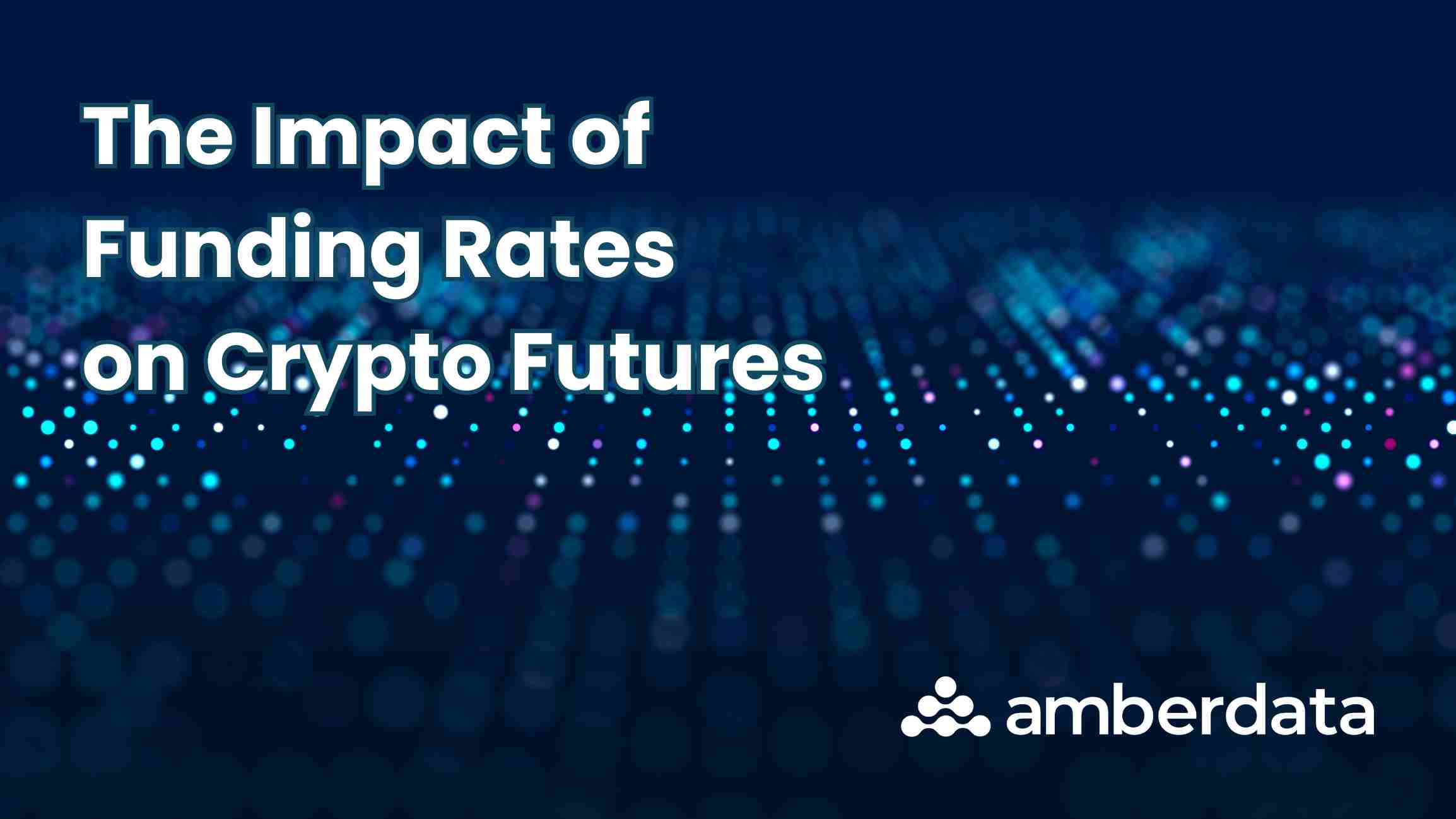
In crypto futures trading, contracts are "perpetual" - they don't have an expiration date like TradFi futures. This means that contracts can be held in perpetuity, without ever having to be rolled over. This is great, giving traders one less headache, but it can create a situation where the futures prices deviate wildly from spot prices. To limit this deviation, crypto futures markets use a mechanism called the "funding rate."
What are Crypto Funding Rates?
Funding rates are periodic payments made to futures contract holders based on the difference between the perpetual contract price and the index price. They ensure that the price of perpetual futures contracts aligns with the underlying asset's spot price.
If the future is trading at a premium compared to spot, long positions pay a funding fee to short positions. This is called a “positive funding rate.” Conversely, if the future is trading at a discount to spot, short positions pay a funding fee to long positions. This is called a “negative funding rate.”
The net result in both cases is that traders are incentivized for activity that narrows the difference between the contract price and index price.
How are Crypto Funding Rates Calculated?
There are two components in calculating funding rates: Premium and Interest Rate. Premium denotes the spread between the futures and spot prices. Interest rate is typically fixed as a given percentage during a specific funding interval, usually eight hours. Exchanges differ in their funding rate mechanism design, and how they report their funding rate data, but Amberdata provides normalized data across exchanges.
Different exchanges use different interest rates, and during times of extreme market volatility the funding interval may get smaller (that is, the interest rate will be recalculated more frequently). At Binance, for instance, the rate is 0.03 percent per day – 0.01 percent per each funding interval of eight hours. Other exchanges charge different interest rates.
Realized Funding Rate: Many exchanges report two different funding rates. The realized funding rate represents the actual funding rate calculated over the previous funding interval, and is used in determining the funding payment. The predicted funding rate is the current estimate of what the funding rate will be at the end of the current funding interval. Some exchanges refer to this as the real-time funding rate or the next funding rate. While the predicted funding rate could be important to certain users, at Amberdata, we're more concerned with the realized funding rate.
Funding Interval: The funding interval represents how often the funding rate and funding payments are calculated. For many exchanges, a funding rate is produced every eight hours and is calculated based on the difference between the future’s price and the spot’s price over the previous eight hours. In this case, the funding interval would be eight hours. For some exchanges, the funding rate and funding payments are calculated on a continuous basis, so the funding interval is set to one millisecond by convention.
A simple calculation of the actual funding fee paid by traders is Funding Fee = Premium x Funding Rate.
How Do Crypto Funding Rates Affect Futures Trading?
Funding rates can significantly influence the dynamics of the crypto futures market, affecting everything from market sentiment and profitability to liquidation risk, arbitrage opportunities, and price convergence.
For one thing, they can be a good indicator of market sentiment, with positive funding rates usually reflecting bullish sentiment, while negative rates tend to signal a bearish mood. They also, of course, can affect traders’ returns, in the sense that funding rate payments represent a gain or loss to the trading position -- high funding rates can erode gains or increase losses if held for extended periods.
Funding rate payments can be a factor in trade timing. By carefully timing your trades in relation to funding intervals, you can either avoid or take advantage of funding rate payments. Positioning around funding intervals can help optimize your funding rate costs. Funding rates can also create arbitrage opportunities since funding rates can vary among exchanges.
Finally, understanding and monitoring funding rates is key to risk management in crypto futures trading, particularly in avoiding liquidations. How? If the funding rate is high and you're paying significant funding fees, this can push your portfolio’s margin balance below the maintenance level, triggering position liquidations.
In other words, if you're holding a long position when the market is extremely bullish (resulting in high positive funding rates), or a short position when the market is very bearish (resulting in high negative funding rates), you’ll be paying high funding fees. If these fees decrease your account to the point where it no longer covers the margin requirements for your position, your position could be liquidated.
Understanding Funding Rates Is Crucial
Understanding funding rates and effectively managing your positions with them in mind is crucial for traders engaging in crypto futures trading. By being mindful of these rates, you can optimize your gains and mitigate risks.
Amberdata enables you to stay informed about the funding rate trends for the contracts you trade. It helps you regularly monitor the funding rates to identify patterns or anomalies that could impact your strategies. Amberdata provides historical and real-time funding-rates for futures and swaps. We also provide best-in-class institutional grade derivatives coverage and analytics.
To learn more about Amberdata, please contact us to book a demo, hear about our products that can help your business, or receive pricing information.
Amberdata
Amberdata is the leading provider of global financial infrastructure for digital assets. Our institutional-grade solutions deliver data, analytics and comprehensive tools and insights that empower financial institutions to research, trade, and manage risk and compliance in digital assets. Amberdata serves as a...
